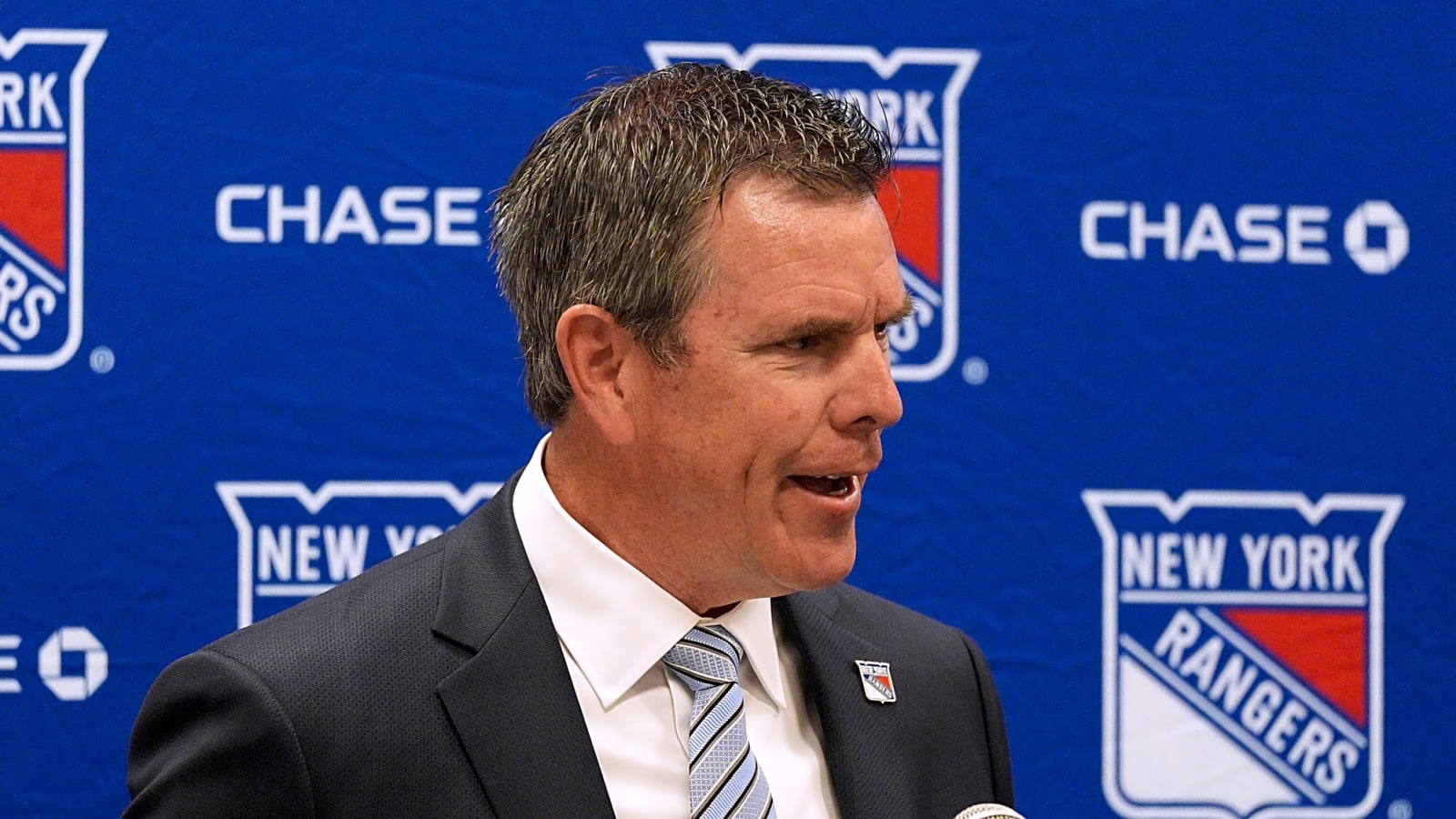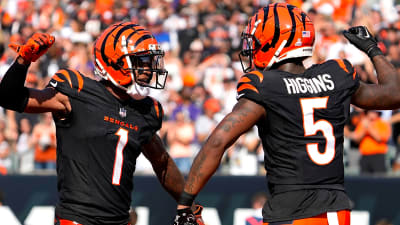
The offseason has arrived for half of the league’s teams that aren’t taking part in the playoffs plus those already eliminated through the first couple of rounds. Accordingly, it’s time to examine what they will need to accomplish over the coming months. Next up is a look at the Rangers.
What a difference a year makes. In 2023-24, the Rangers won the Presidents’ Trophy with a 114-point effort and made it to the Eastern Conference Final. With the bulk of the core intact heading into this season, expectations were high and they were a popular Stanley Cup pick. Instead, things went off the rails early and they never recovered. GM Chris Drury has already made one big change with Mike Sullivan taking over behind the bench for Peter Laviolette but he has several other things to address in the coming weeks and months.
Make First-Round Pick Decision
As part of the trade to bring center J.T. Miller in for his second stint with the team, the Rangers parted with a first-round pick to get him. While the expectation and hope was that they’d be a playoff team, Drury was able to get some light lottery protection on the selection before making the swap. That turned out to be prudent as, of course, New York wound up missing the playoffs.
The protection on the pick was if it fell in the top 13. While the Rangers weren’t one of the big winners in the draft lottery, their selection wound up 12th, meaning New York still has control of it.
Drury now has two options. He can elect to keep this pick but doing so means that their 2026 pick would be moved instead without any protection on it. Alternatively, even though this year’s pick fell into the protected range, the Rangers can still choose to convey it this year but that means handing a top-12 pick to a division rival as Pittsburgh now holds the selection after acquiring it from Vancouver soon after the Miller swap was made.
It’s not necessarily an easy call to make. If Drury truly believes the Rangers can turn things around under Sullivan with the bulk of the core intact, it’s a question of weighing the 12th pick this year against something in the high-teens or early-20s next year. Using that framework, keeping the pick and dealing next year’s pick would make sense. But if there’s any uncertainty about their status as a playoff team for 2025-26, letting an unprotected pick go to a division rival would be risky. Either way, a call on this will need to be made in the near future.
Create Cap Space
While the Rangers got rid of Barclay Goodrow last summer and former captain Jacob Trouba early in the year to create cap space for next season, that money was spent quite quickly on Miller’s addition and long-term extensions given to Igor Shesterkin and Alexis Lafreniere. As a result, they enter the cap space with less than $9MM in cap space, per PuckPedia, and their RFA class (more on some of them shortly) alone will eat that up. Accordingly, if Drury wants to add to his roster, he’s going to have to open up some cap room first.
Early in the season, the Rangers made it known that veteran winger Chris Kreider was available but in the midst of a down year that saw him miss time with injury, suitors weren’t lining up for his services. He has two years left on a deal that carries a $6.5MM price tag and a 15-team no-trade clause that could limit New York’s options. It’s unlikely he’d yield a high-quality return but it’s possible that there’s a move out there that could bring a player back and open up at least a bit of cap flexibility.
The other veteran who found himself in trade speculation in-season was center Mika Zibanejad. With Miller being signed through 2030 and Vincent Trocheck through 2029, some have wondered if Zibanejad could be expendable. But he’s also coming off a quiet year (though he still managed 20 goals and 62 points) and is signed at $8.5MM per season through 2030. He’s also 32 with a full no-move clause which takes the threat of waivers off the table. It’s possible that there could be some interest from teams not looking to get into the free agent market or from some who struck out on that front. Again, assuming there’s a move he would approve, the Rangers probably wouldn’t clear the full salary but would likely get a player or two back and at least some cap relief.
On a smaller-scale front, defenseman Carson Soucy also feels like a possible candidate. Just acquired before the trade deadline, he’s now on an expiring deal worth $3.25MM and his trade protection drops to just 12 teams in July. If New York wants to do something else on the back end and there’s a team looking for just a short-term addition, a move could be made there as well.
Drury has shown he’s willing to be aggressive in moving players out to open up salary cap flexibility. He’s going to have to be similarly aggressive to do so again in the weeks ahead.
Make A Decision On Miller
Let’s talk about one of those restricted free agents now, defenseman K’Andre Miller. Two years ago, New York’s cap situation forced them to only focus on a bridge contract with the belief that, like Lafreniere, a long-term deal would await him at the end of it.
However, his output dipped last year after his breakout effort in 2022-23 and it dropped again this season to seven goals and 20 assists in 74 games although he did average a career-high-tying 21:57 per night of ice time. He also had more than his fair share of defensive struggles.
Miller has two years of team control left, both of which are arbitration-eligible. He’s also owed a $4.646MM qualifying offer, one that matches his salary from this season but represents a jump of nearly $800K on his cap hit.
Do they look to do another bridge deal, one that could very well be trying to get him to accept his qualifying offer? That would help the most from a salary cap standpoint this season but would also put him a year away from UFA eligibility where if he wanted to test the market, he could simply file for arbitration next summer, take the award, and hit free agency. Generally speaking, teams try to avoid that scenario. A two-year bridge would cost more and walk him right to UFA eligibility so that’s probably out of the question while a three-year pact would cost even more but could be more palatable from a longer-term perspective.
Or, if Drury wants to be aggressive, he could take Miller to arbitration where he could ask for a 20% drop on the qualifying offer which means they could offer $3.72MM on a one-year deal. That has its risks as well, however, as Miller would then be eligible to ask for a two-year award, taking him right to UFA eligibility. Plus, such a move could sour relations between the two sides. But Drury has been ruthless before so this option should at least be noted.
The other two alternatives would be a long-term deal, one that would probably push past $6MM per season and require a cost-cutting move. The other one would be cutting bait altogether and trading him outright. Given that Miller is a key cog on the back end, that doesn’t feel like a probable outcome but their hand could be forced if they their cap situation necessitates such a move. Suffice it to say, Miller’s contract is a key domino this summer.
Sign Cuylle Quickly
With the big increases coming to the Upper Limit of the salary cap, there has been more speculation about an uptick in offer sheets. There remains some skepticism about that notion but one thing St. Louis showed with their successful offers to Dylan Holloway and Philip Broberg is that teams can be leveraged with their cap situation. Based on the above sections, the Rangers are a team who could be leveraged on the offer sheet front.
They also have a young player exiting his entry-level deal, just like Broberg and Holloway last year. That would be winger Will Cuylle whose sophomore year was a good one. The 23-year-old finished sixth in the team in points after notching 20 goals and 25 assists along with a whopping 301 hits, good for a tie for third overall in the league in that category. While it won’t directly affect negotiations, he’s also off to a solid start at the Worlds for Canada.
Power forwards are always in high demand. A chance to get a still young one who has now shown that he can score at the NHL level is going to be appealing for teams to kick the tires on. Speculatively, it wouldn’t be shocking to see a team go as high as the top of the second-round tier, a $4.68MM offer on a short-term deal. Going higher on a longer-term deal (a $7.02MM offer would cost a first-round pick and a third-rounder) is also a possibility but a short-term route to try to follow what St. Louis did is the likelier outcome.
Drury needs to ensure he has some leftover cap flexibility into mid-July to try to reduce that potential leverage. By then, Miller’s RFA situation could be settled or it could be arbitration-bound and still in flux for a little while longer.
To guard against that, it might be worth Drury prioritizing Cuylle’s RFA case and get him signed before restricted free agency opens up. That might require them to take a leap of faith that they can free things up cap-wise later on but it might be worth that to take any chance of an offer sheet off the table. Oftentimes, restricted free agents without arbitration rights can be delayed with other cases getting the priority. Here, it could very well be the opposite if they have concerns about an offer sheet coming their way.
Photo courtesy of Danny Wild-Imagn Images.
More must-reads:
- Keeping championship core intact should be Panthers' first win of upcoming season
- Golden Knights reportedly acquire, extend Mitch Marner
- The 'First-overall NHL Draft picks' quiz
Breaking News
Trending News
Customize Your Newsletter
 +
+
Get the latest news and rumors, customized to your favorite sports and teams. Emailed daily. Always free!








